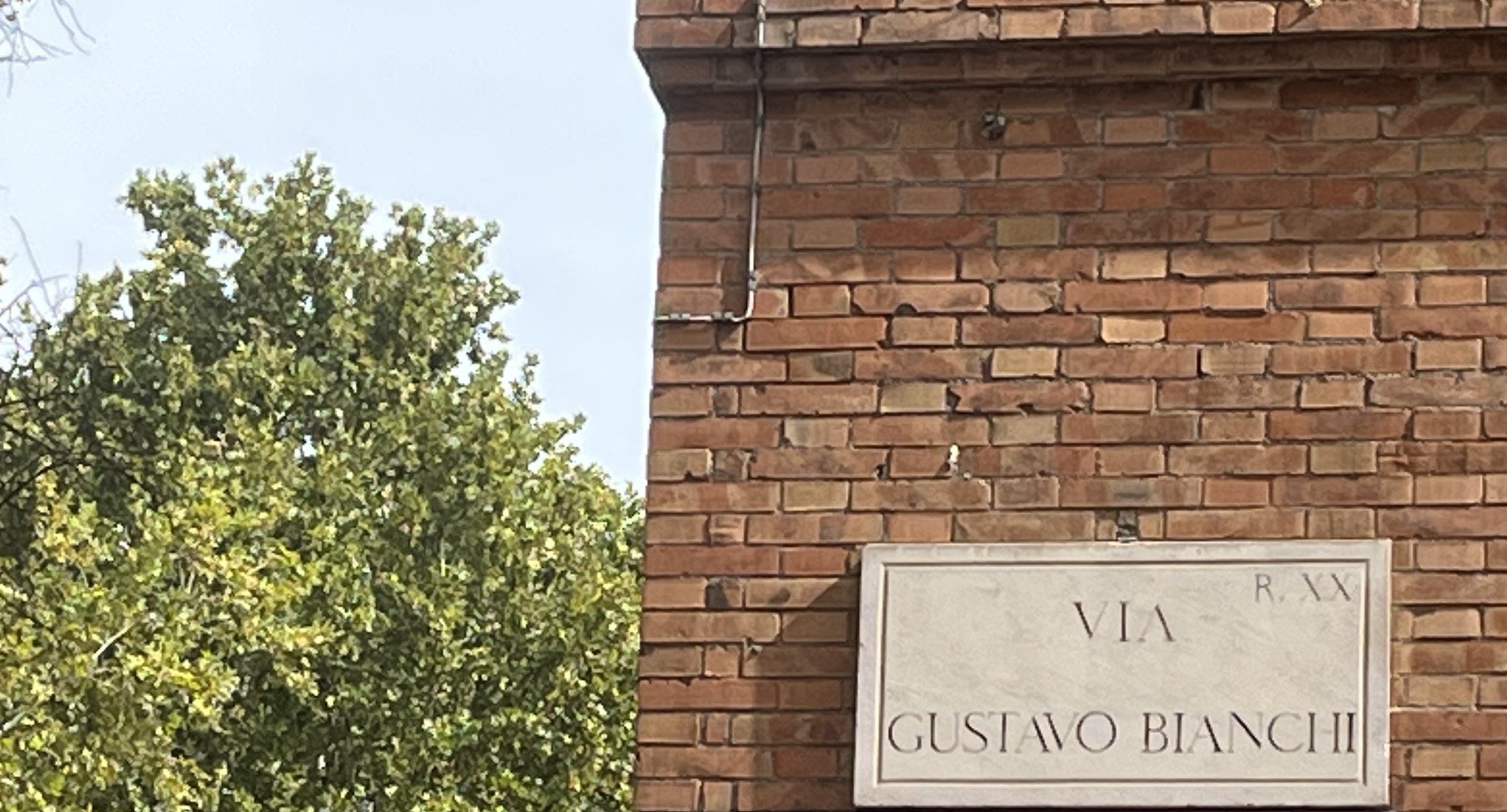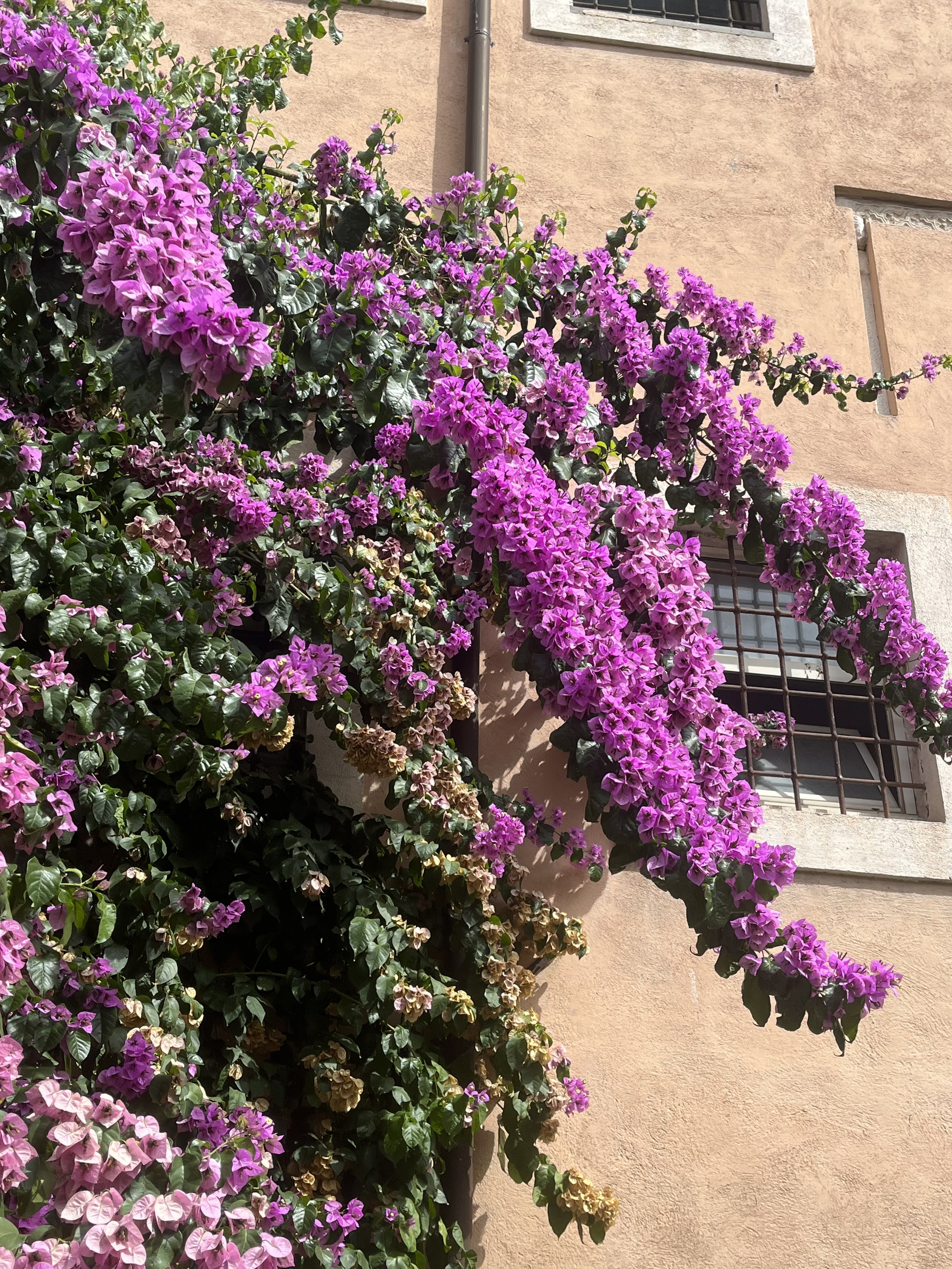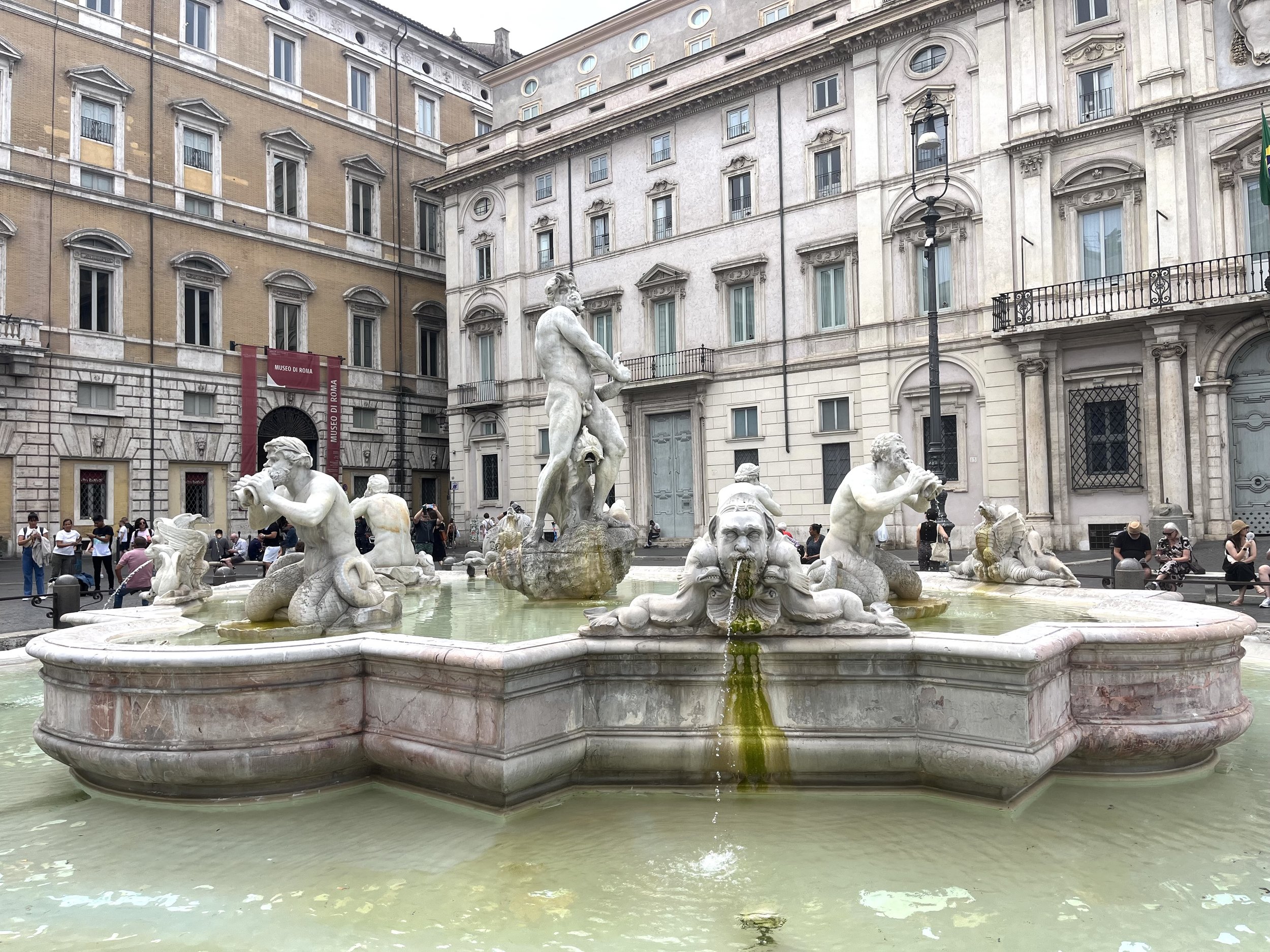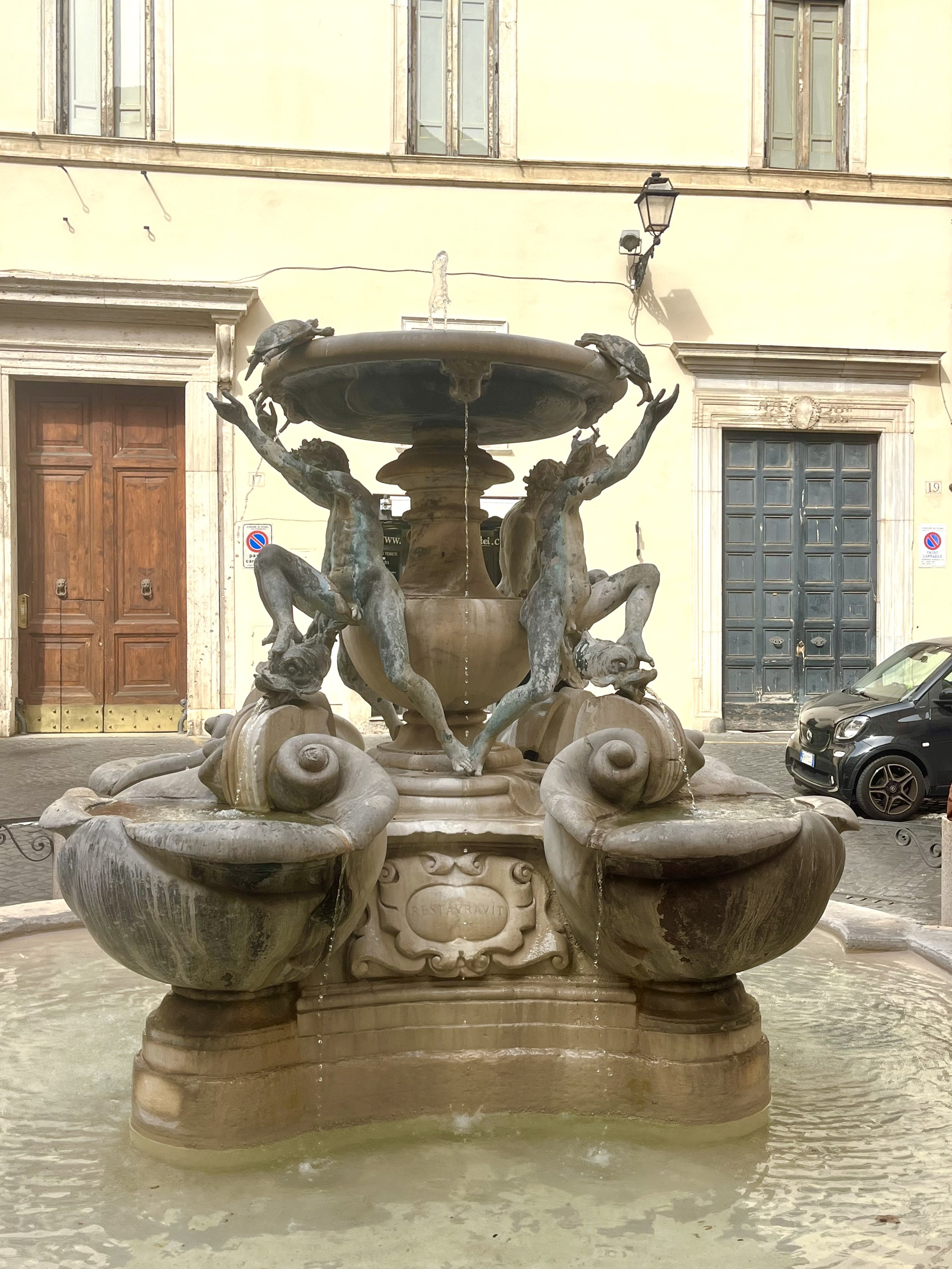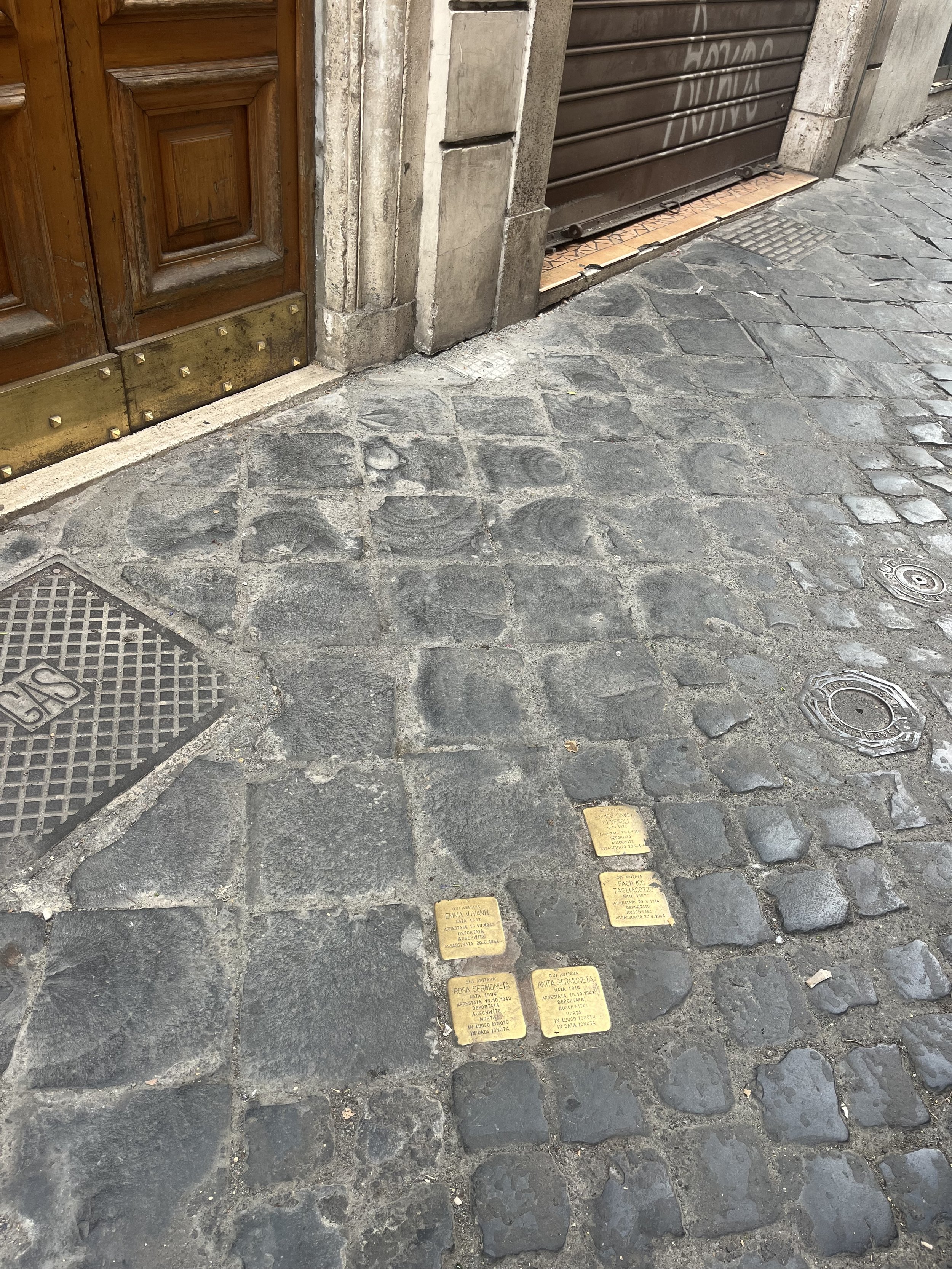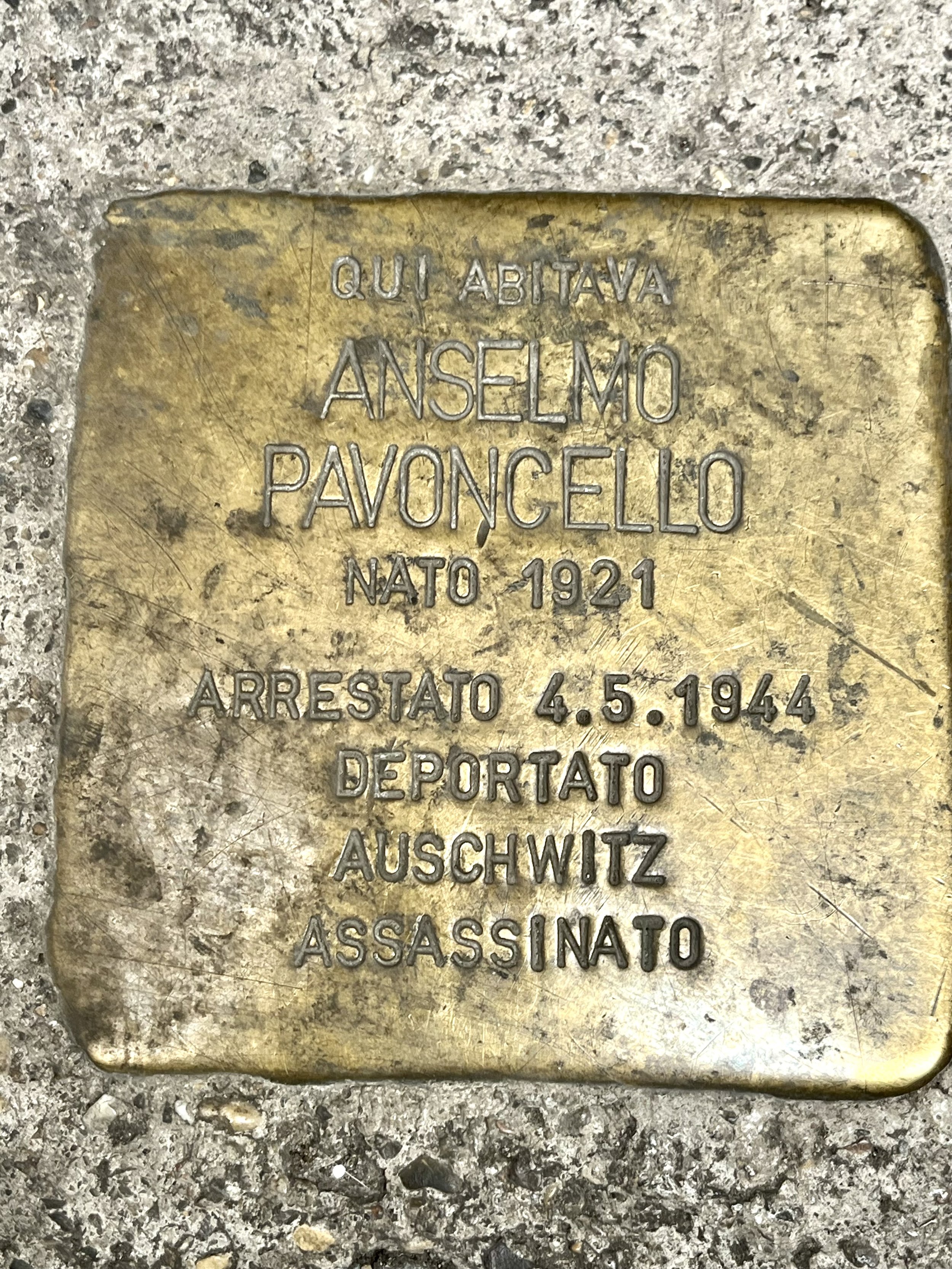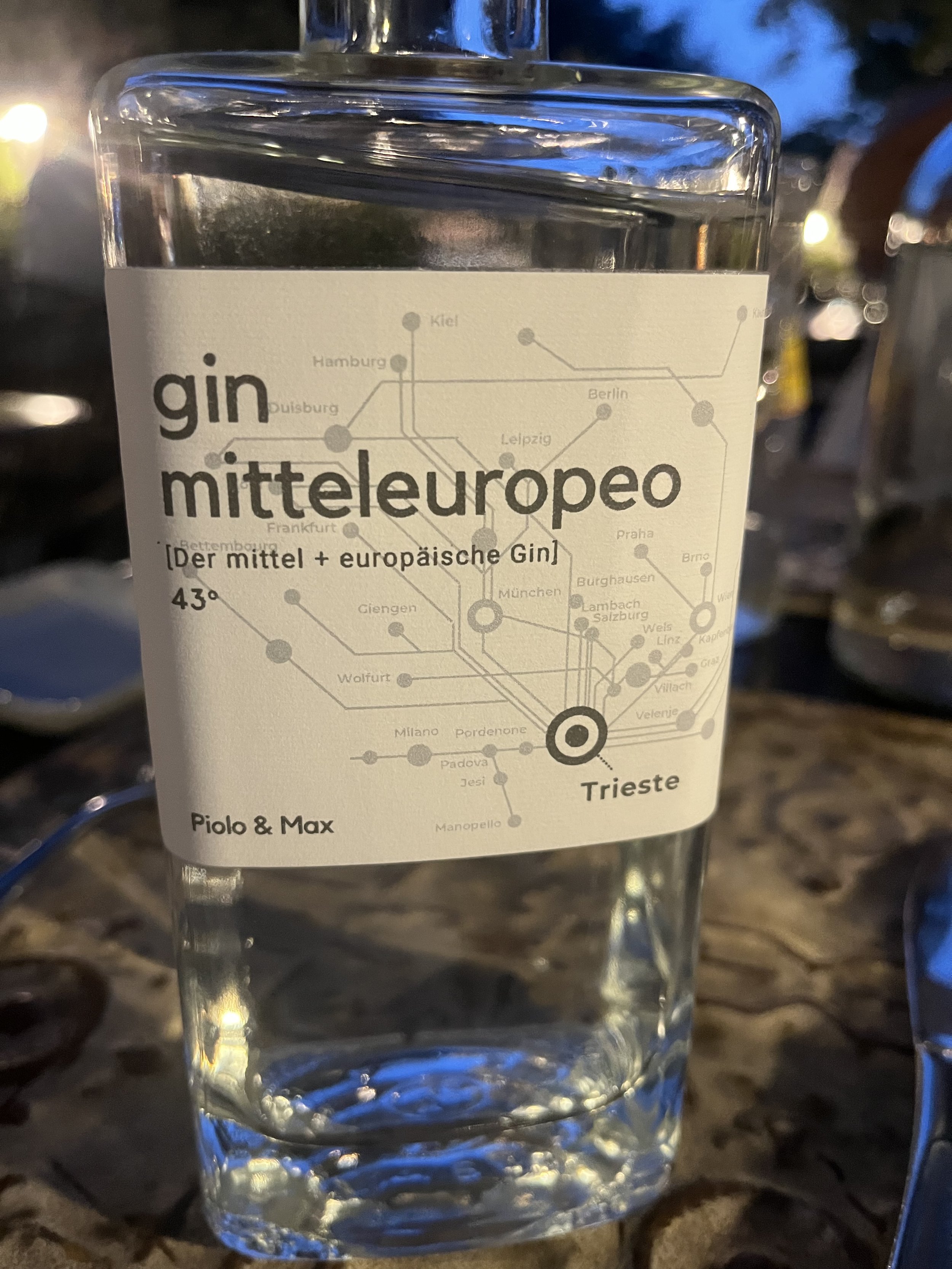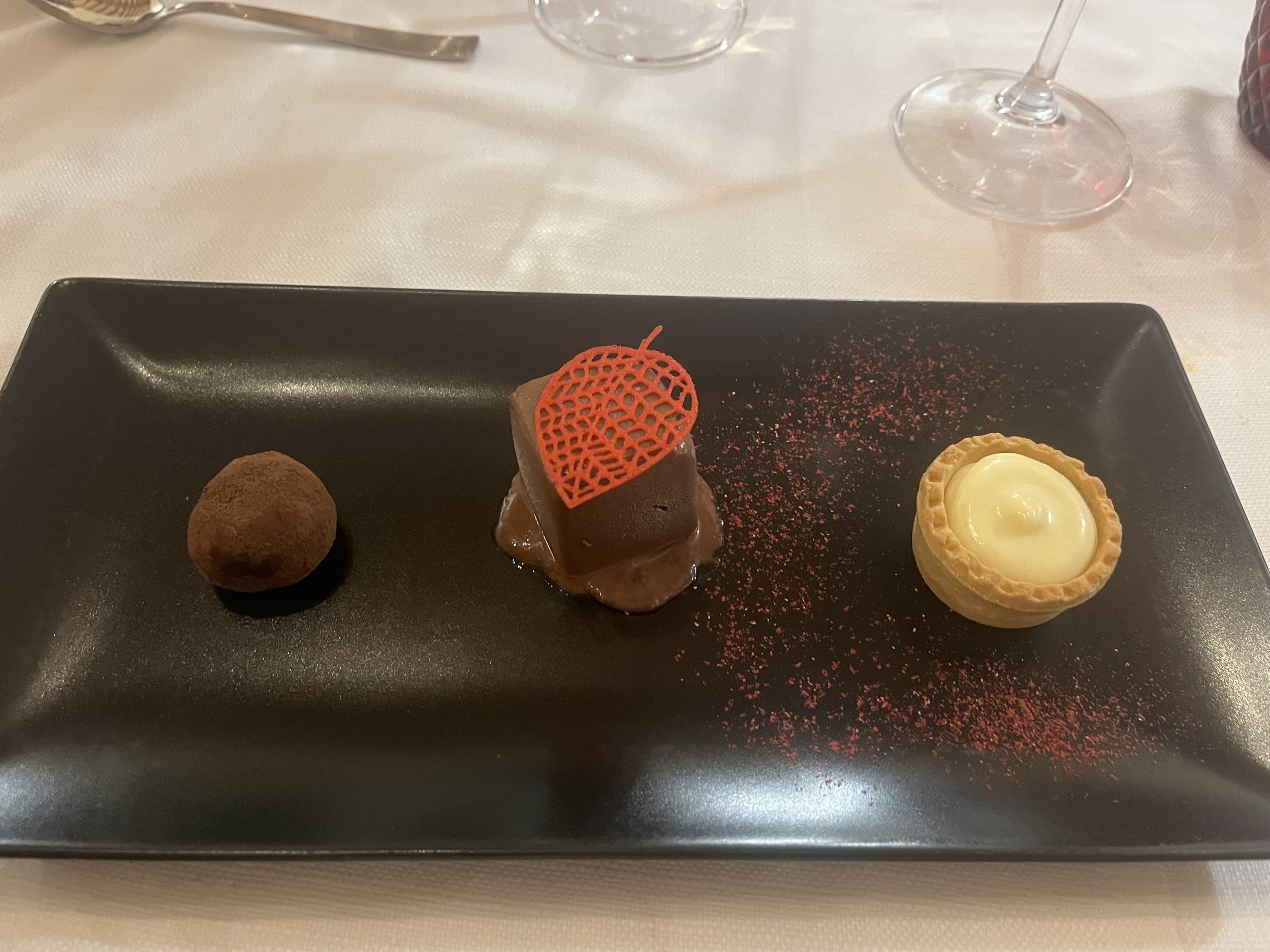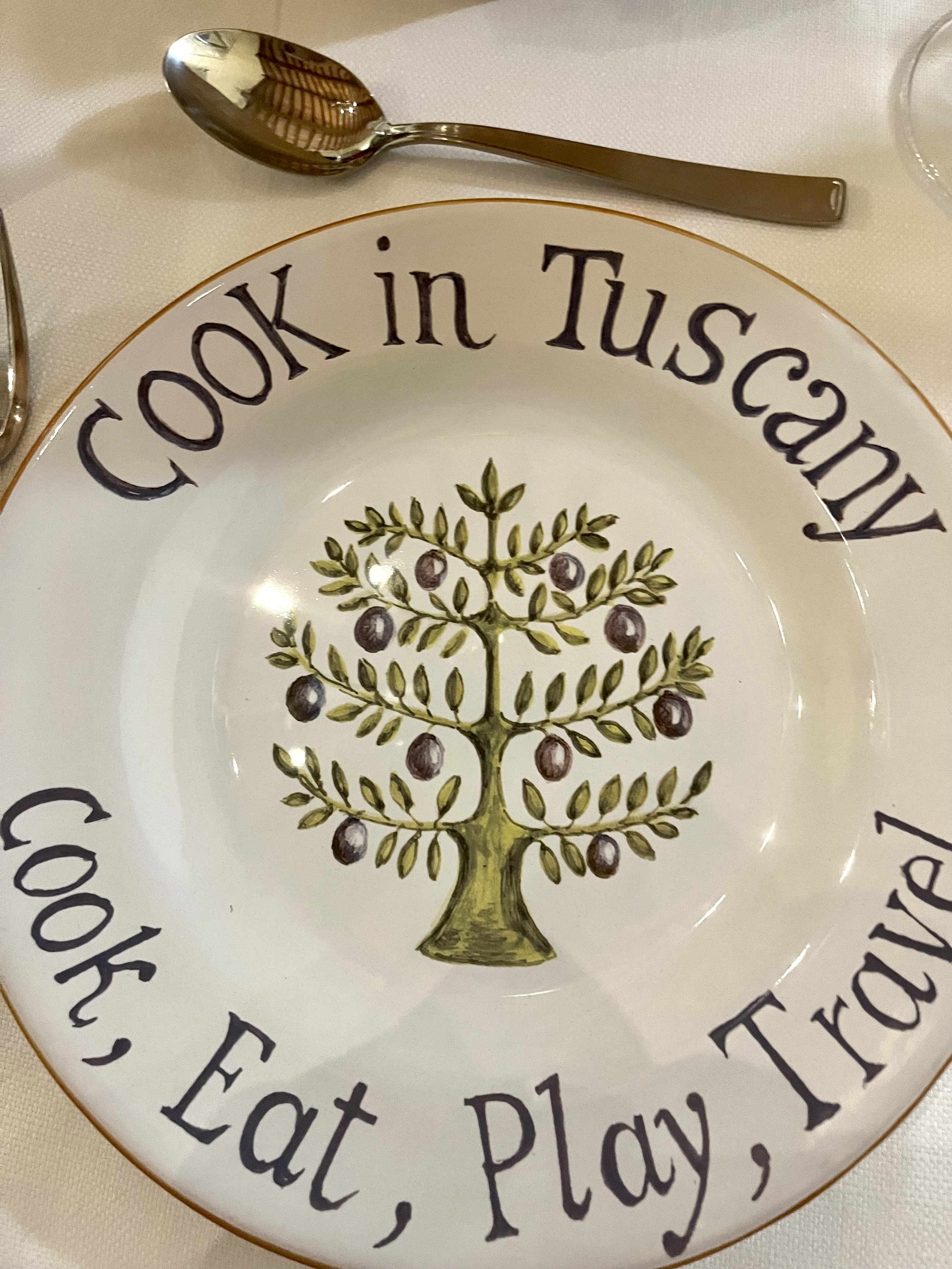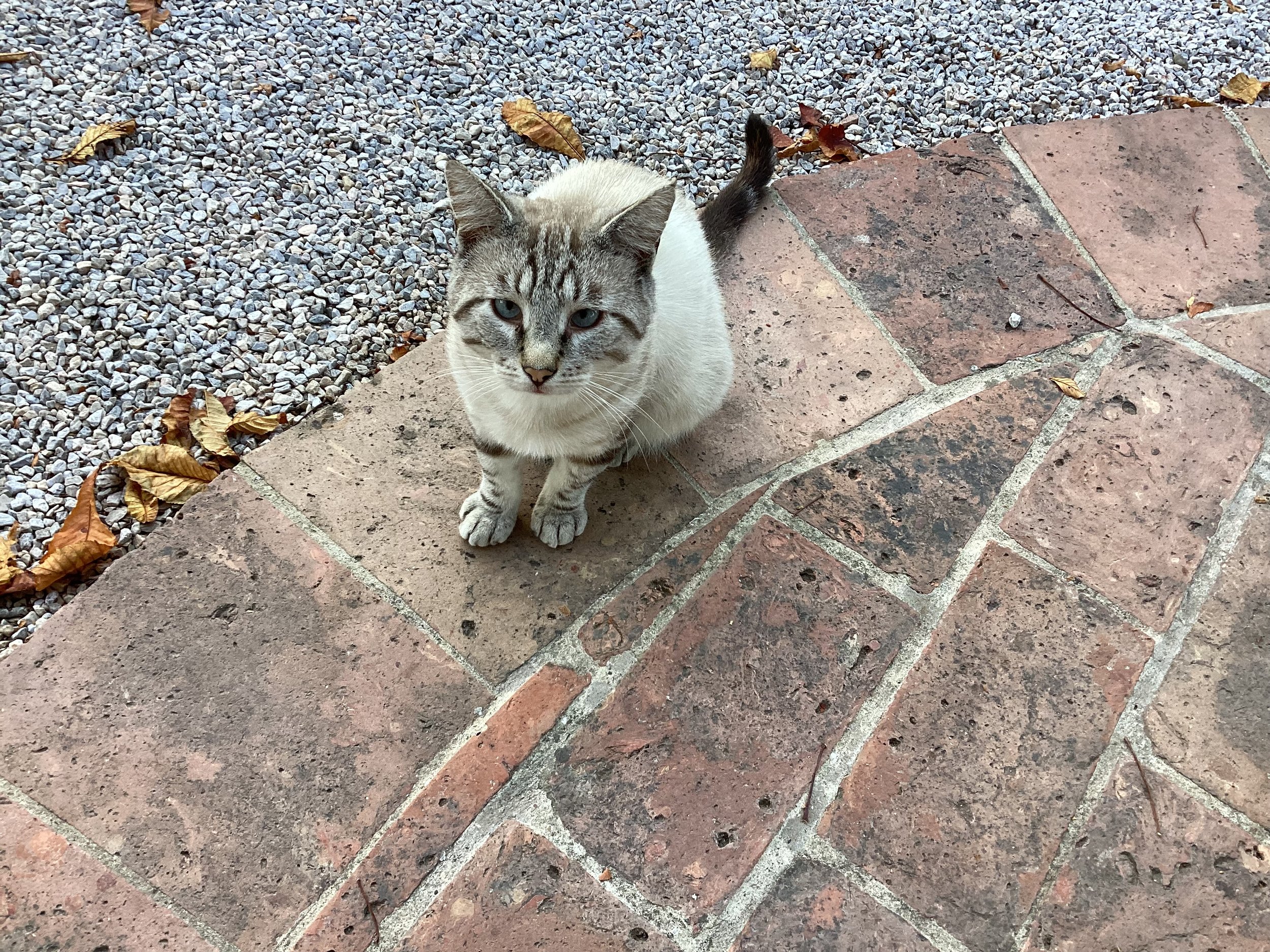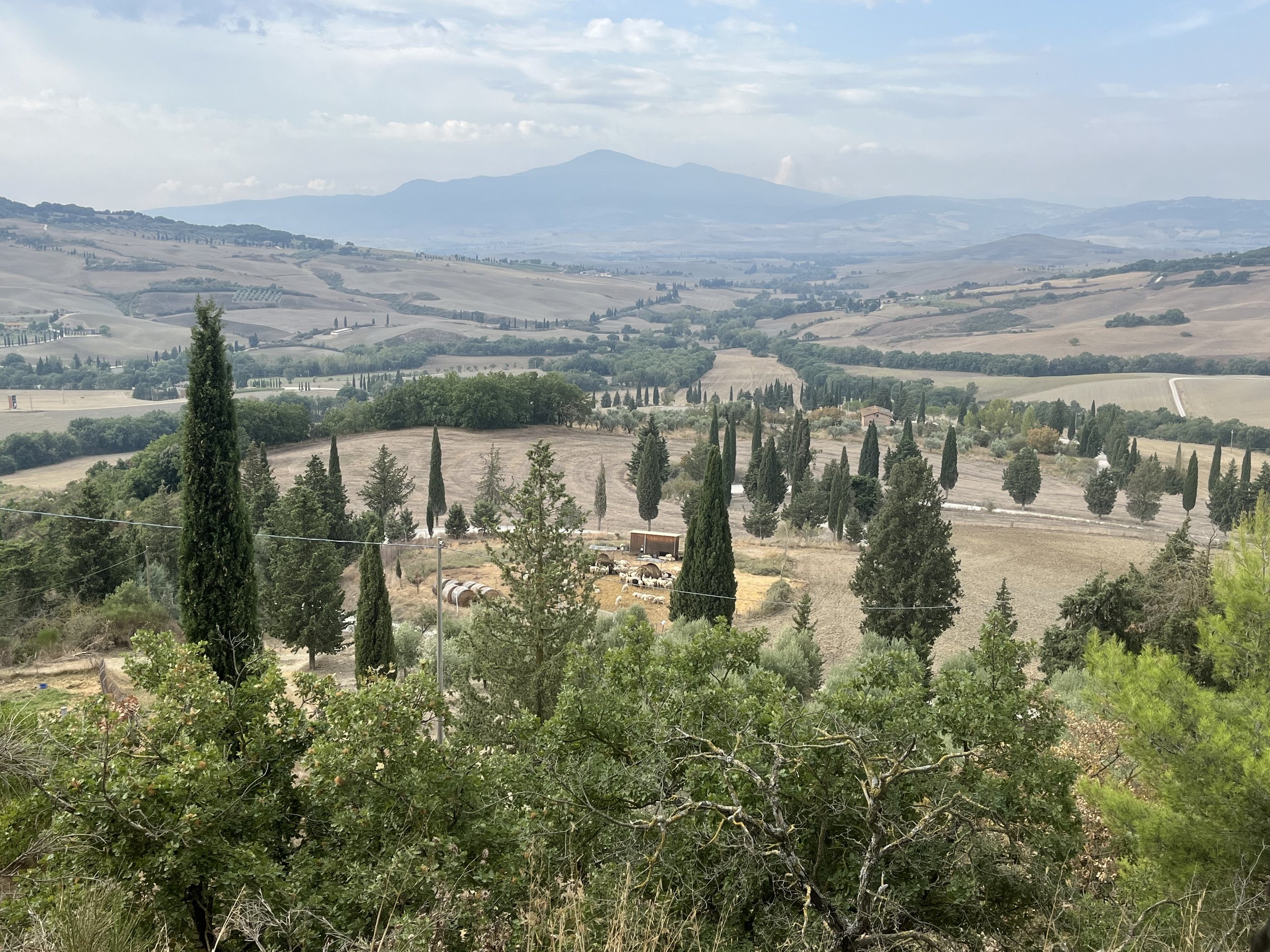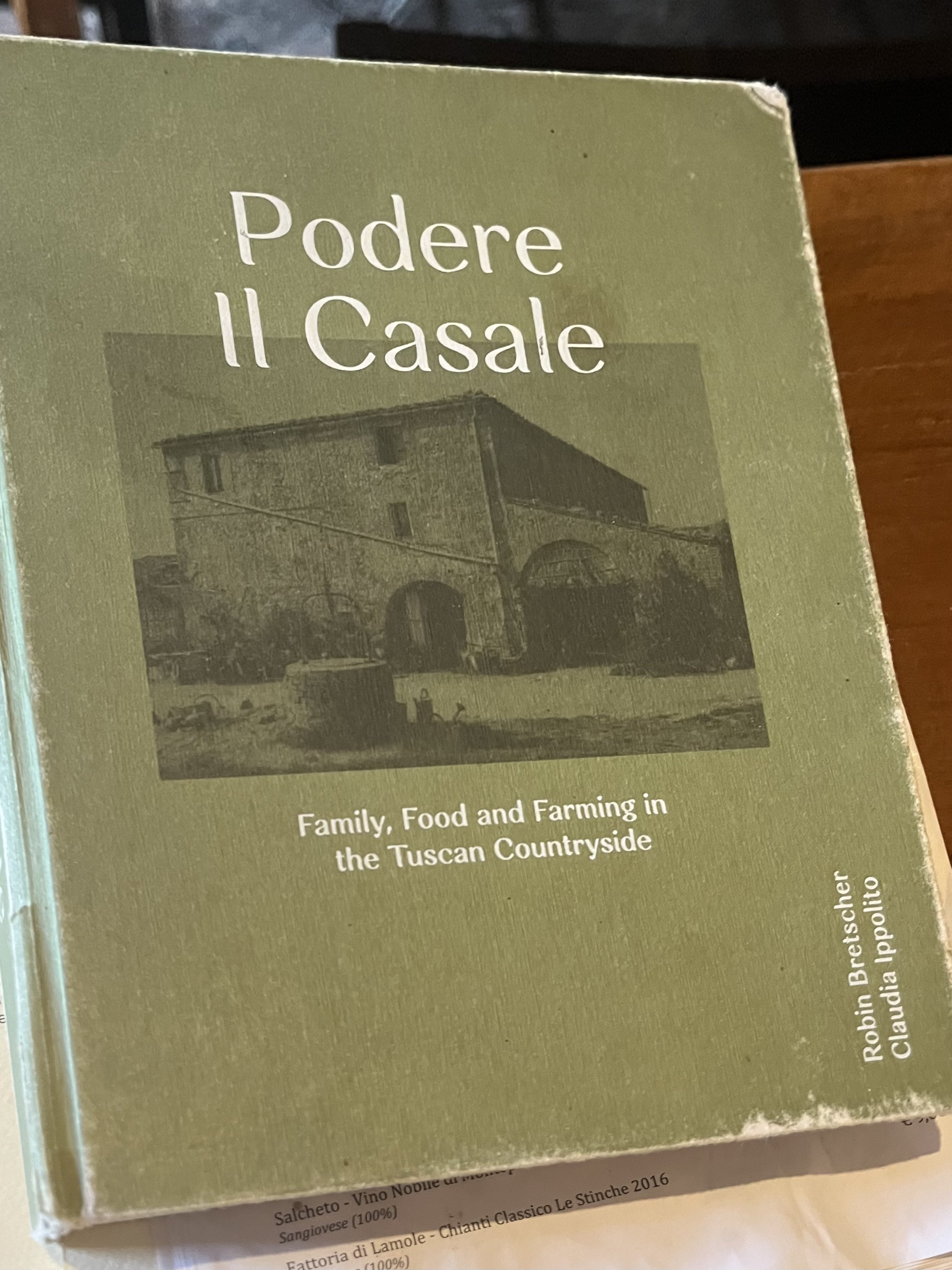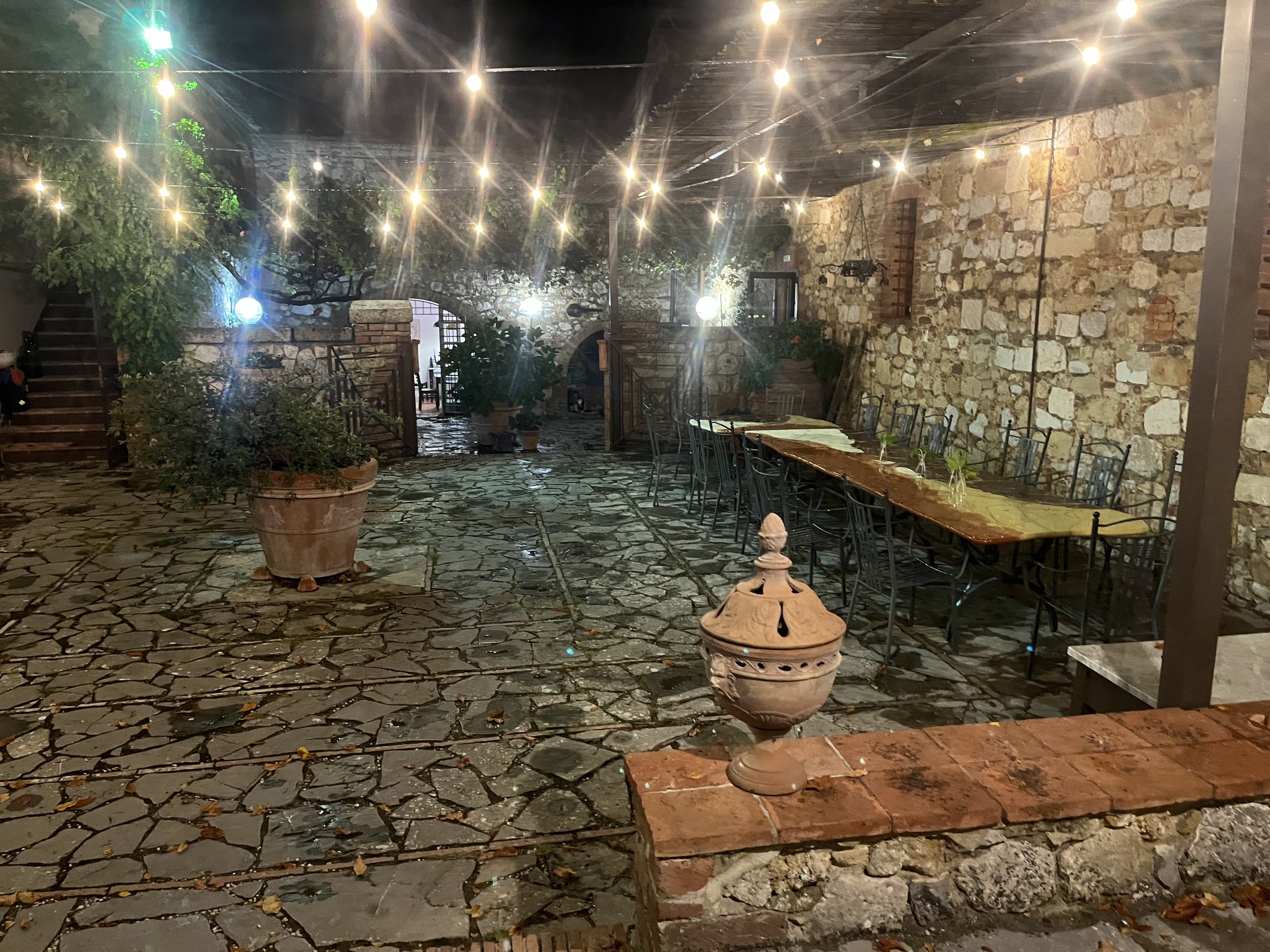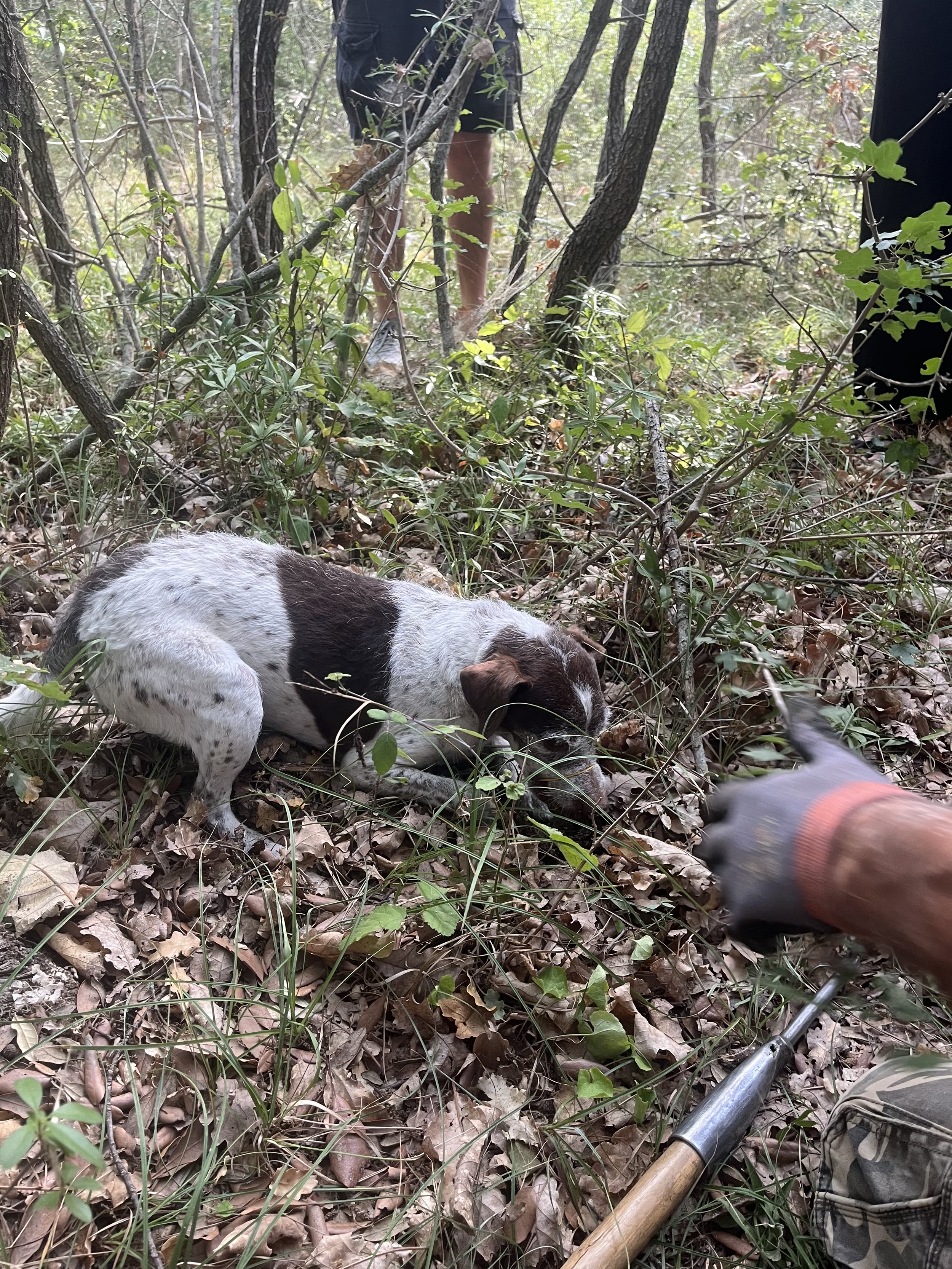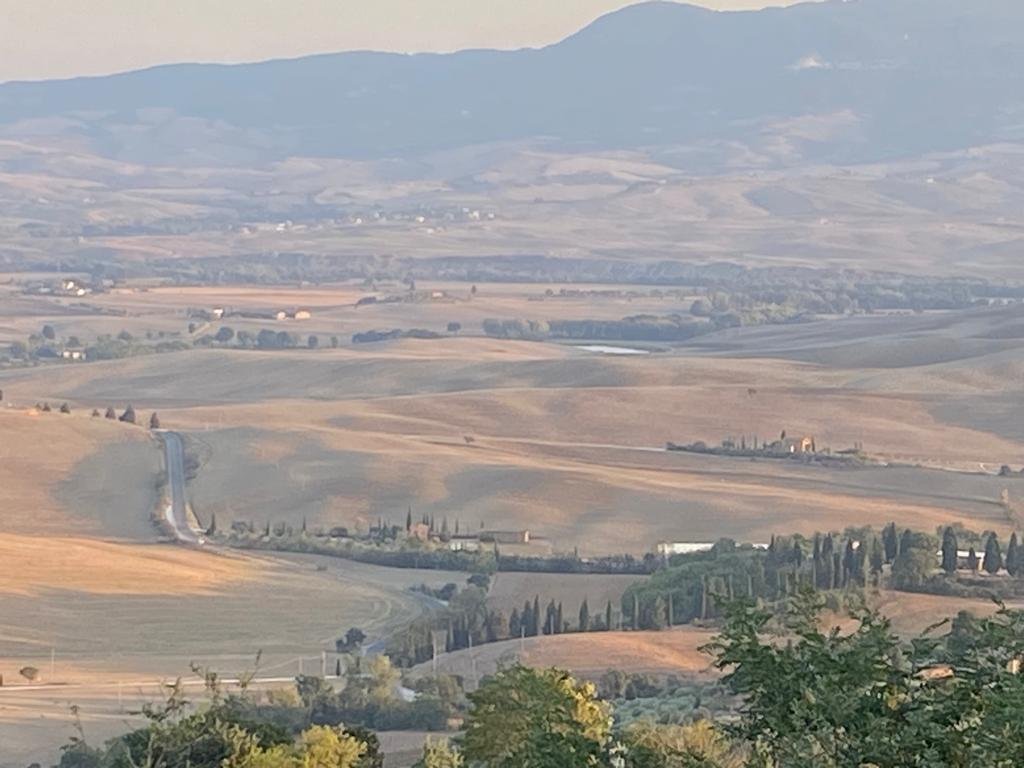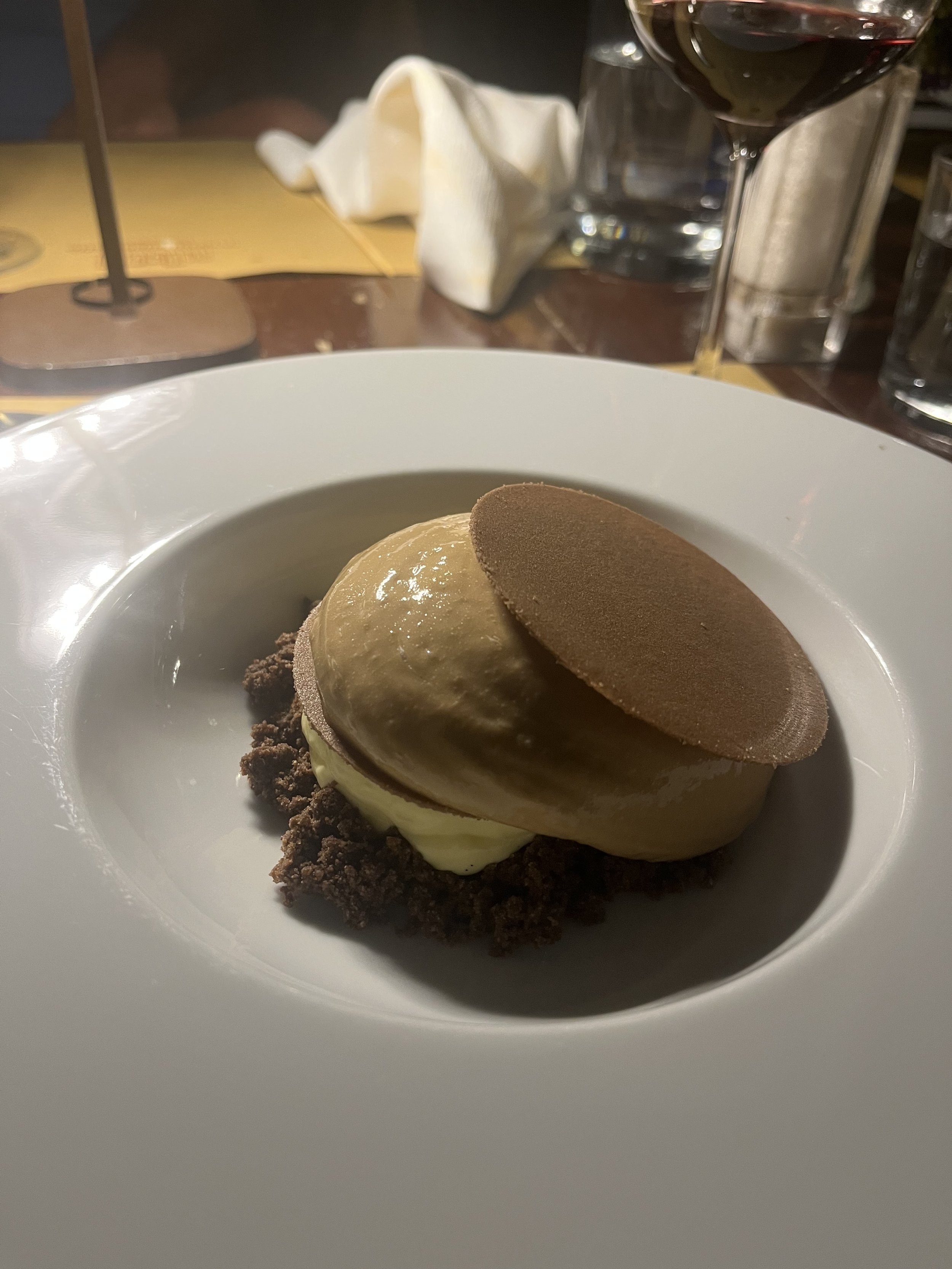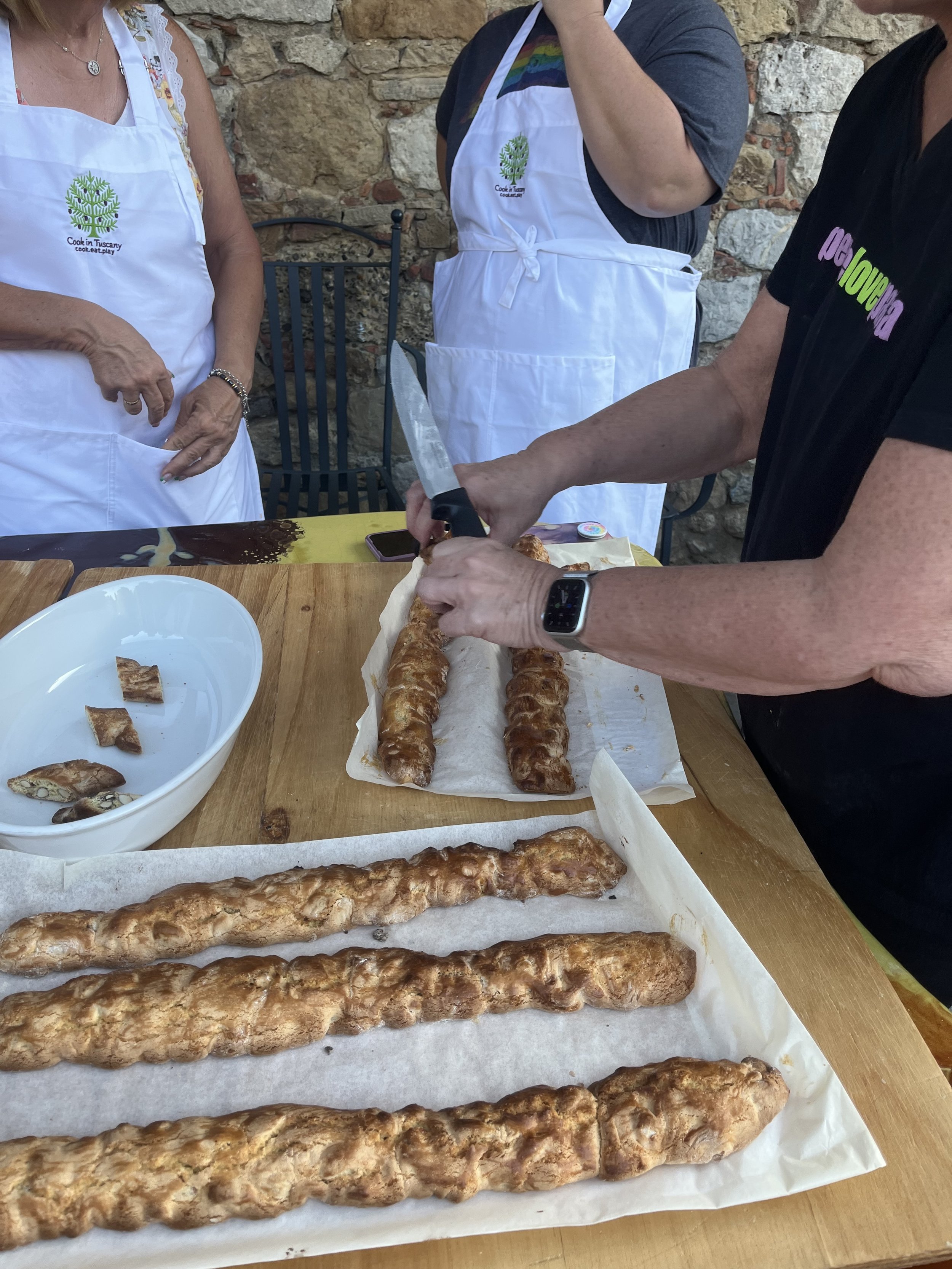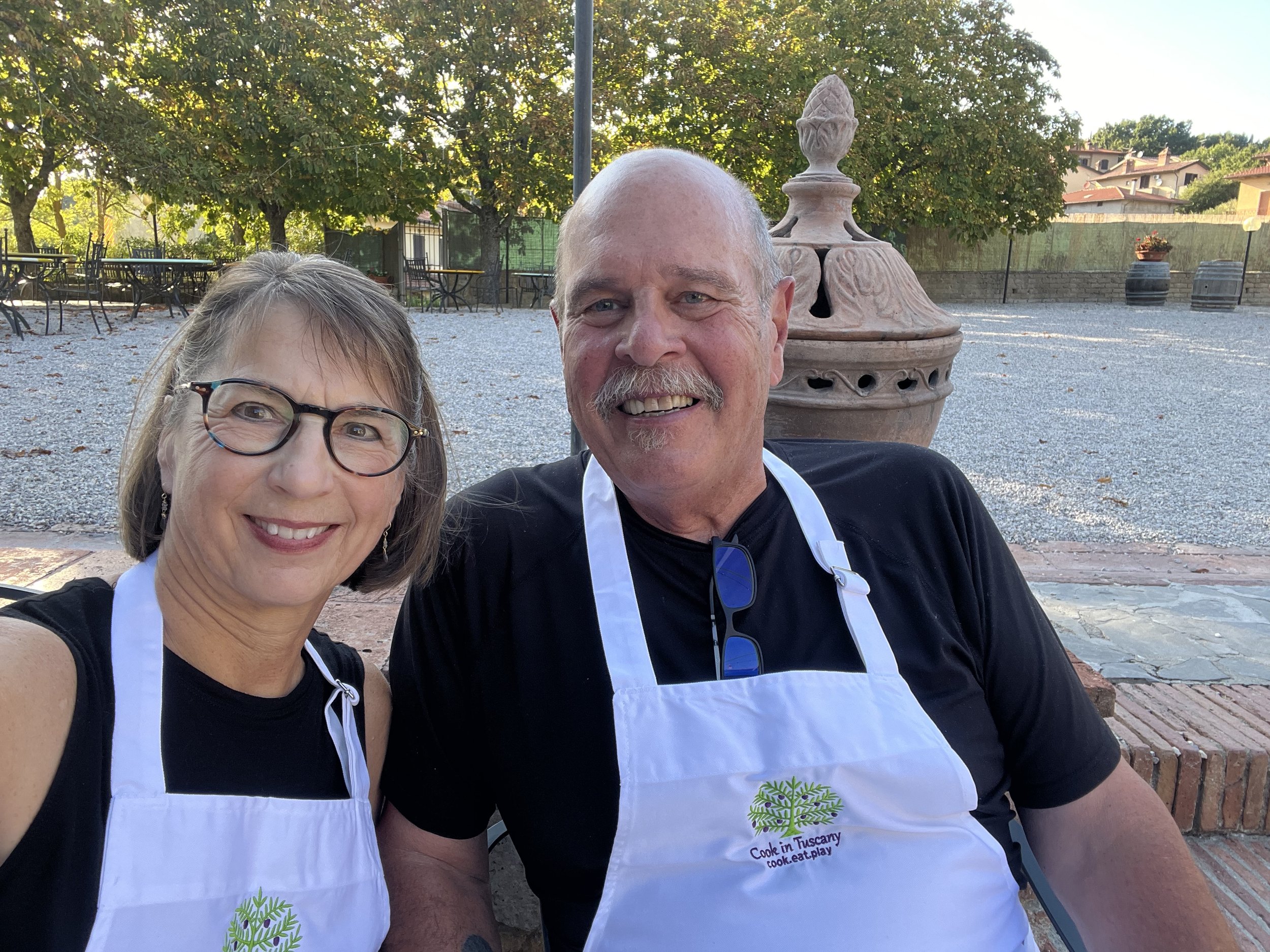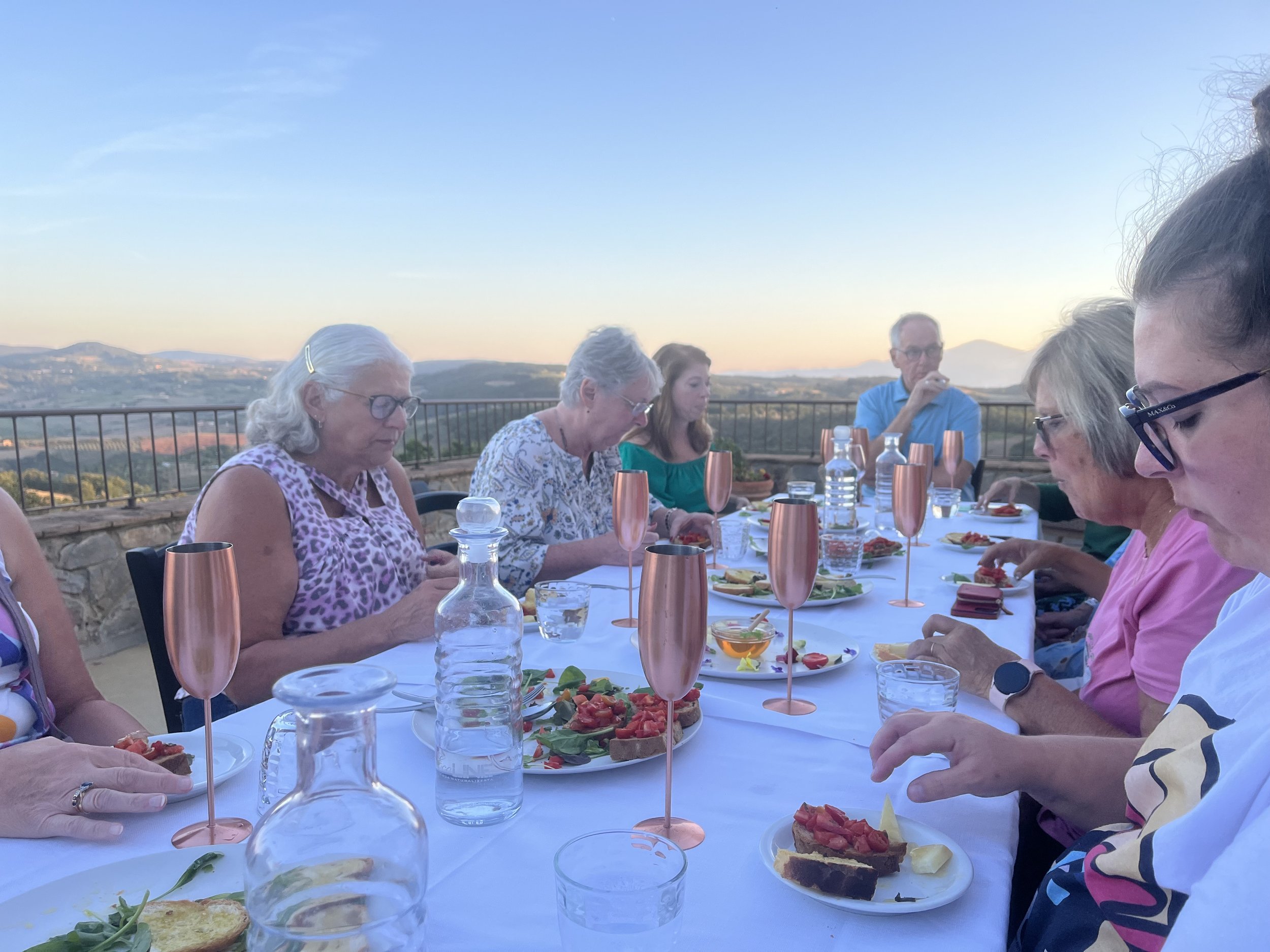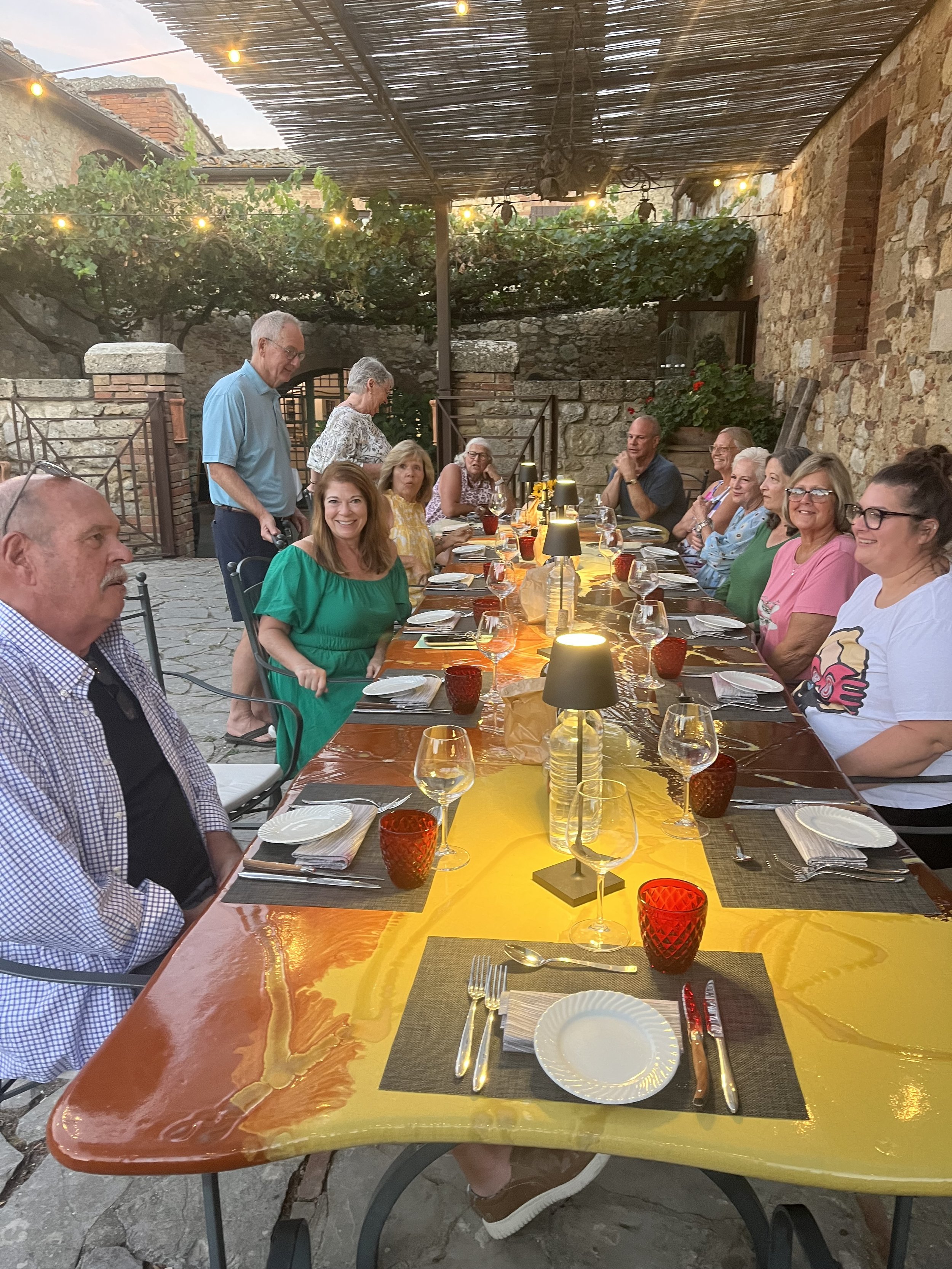And home again...
An early wake-up for our 7:15 am ride we’d arranged to the airport. This guy’s driving was equally crazy to that of the driver in Tuscany. Though it was early morning and we were in no danger of missing our flight, the driver raced through the streets of Rome, honked his horn at those going too slow for his taste, challenged yellow-to-red lights, and screeched to a halt as he dropped us at the airport, both of us out of breath. whew!
We’d each decided to check a bag and had no issues with that (I still get confused about how to apply that dang tag to my bag correctly). Security was smooth, but we were accosted by the huge Duty-Free Mall at the Rome Fiumicino airport. Tons of stores, bright lights, crowds of people, noise–all this at 8 am. We made our way to the second floor for a relatively quiet breakfast and then on to our gate.
Only 3-4 times during my travels have we taken a bus from the terminal to the plane somewhere out on the tarmac, which was the case here. Instead of going down the ramp and onto the plane, we went down the ramp and into a bus. Really surprising for an international flight, I thought.
All went well on that 8.5 hour flight to Boston. I had a bulkhead seat, which is wonderful for stretching out one’s legs, but tray table and monitor are cumbersome as they’re hidden away in your seat. It takes a bit of skill to navigate all smoothly.
The gal across the aisle from me had 5 beers (that I saw), and given I closed my eyes for 90 minutes or so, that number could’ve been more. Oh my. Maybe that’s the only way she’ll fly comfortably. ???
Arriving in Boston at 2 pm, we easily passed through customs (my Global Entry is so slick), then had to claim our bags, drag them to Delta’s baggage transfer desk. It felt good to walk the 15 minutes from terminal E to terminal A, and then we had to revisit security to get into the domestic terminal. Needed a gin/tonic, of course, and along with our warm pretzels, we were ready for the next flight.
The plane to MSP was on time, and as we taxied out to the runway, I noticed a behemoth on the tarmac. This plane’s size dwarfed all others. Looked to me like it had two levels of seats and was so huge that most planes appeared as little honey bees next to a giant bumblebee. Cousin-in-law Paul Chapin (former American pilot) tells me it’s an Airbus 380, largest airliner in the world, and it really stood out. Check out its details online. Amazing
Despite a huge lineup to leave from Boston which I thought might delay us, we arrived in MSP a bit early. Ah…Minnesota! As much as I love to travel, returning to MN always delights me. PJ was waiting to fetch our weary bones and bags, and the 90 minute drive home culminated the 20 hour Rome-to-Albert Lea adventure.
We fell into bed around 11 pm, but awoke at 5 am–our sleep/wake clocks not yet in sync. The first morning after returning home is always dreamlike for me–it’s like you fall asleep in one country and awaken in another.
I’m always in awe of the miracle of discovering the world and of being able to travel relatively quickly from one part of it to another. You fall asleep in one country with its culture, language, etc., and awaken back in your old stomping grounds, everything familiar and yet perhaps a bit disappointing. Oh yeah, this is all the same–was I even gone? Were those adventures real? Indeed they were, and I have pictures, recipes, and wonderful memories to prove it.
We enjoyed early morning coffee in the sun room and looked out at the lawn and lake as the sun rose. Then we walked the dog (two cats in tow) and settled back into our usual routine, or at least tried to as we unpacked, ran to the store, and again regained our rhythm here. We decided to evaluate the oils and vinegars in our cupboard. After our lessons in cooking, some may have to go!
A great adventure. Thanks for reading along.


















